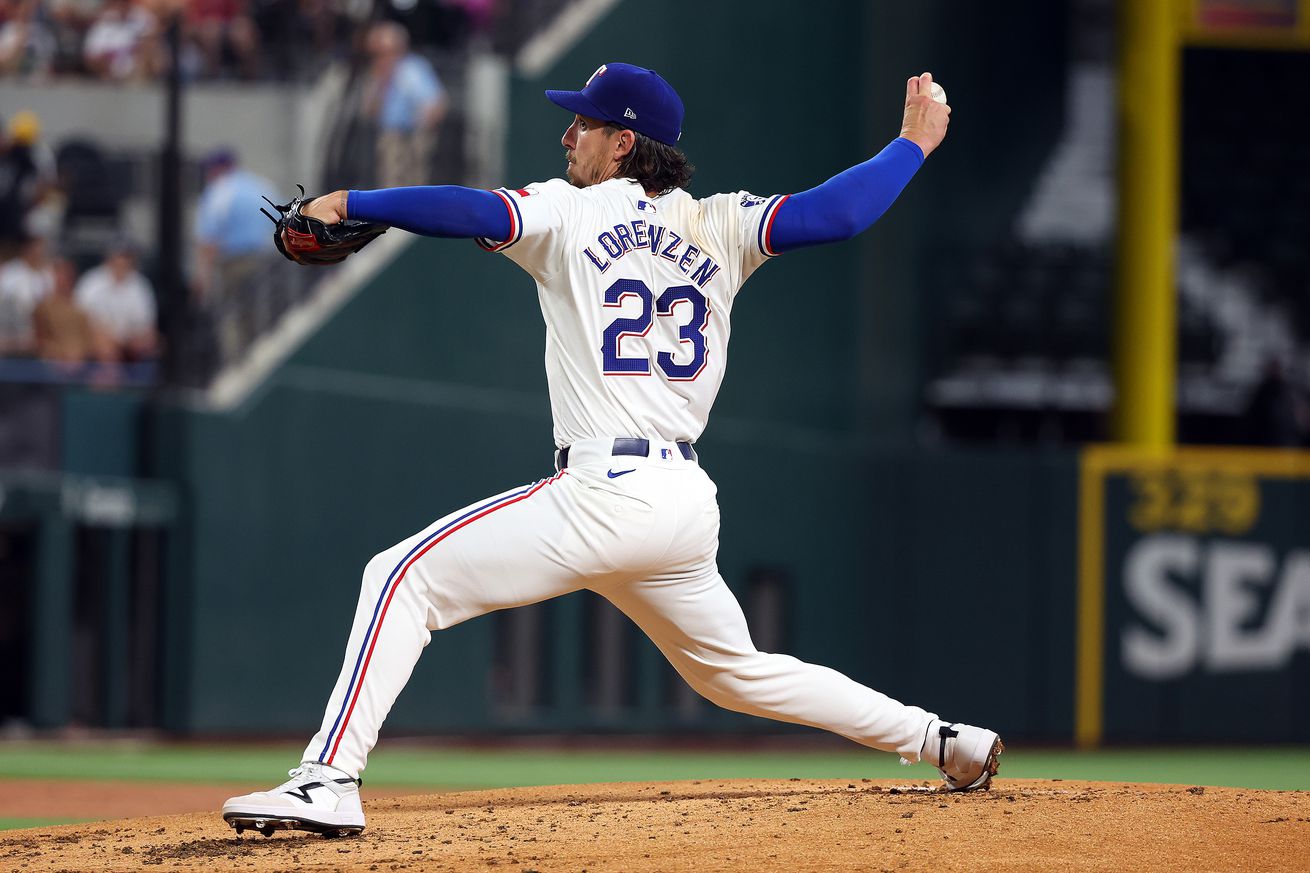
Michael Lorenzen did what he was asked to do
With the 2024 regular season over, it is time for us to go back and take a look at the players who appeared for the Texas Rangers this season.
Today, we look at starting pitcher Michael Lorenzen.
In the 2016-17 offseason, the Texas Rangers, coming off a season where they had the best record in the American League, signed reliever-turned-starter Andrew Cashner to a one year deal very early in the offseason. Cashner was a steady contributor for a disappointing Rangers team that was under .500 for most of the season, but that was still on the fringes of the playoff race heading into September. The Rangers faded in September, ending the year with a 78-84 record, while the last Wild Card spot went to an 85 win A.L. Central team.
In the 2023-24 offseason, the Texas Rangers, coming off a season where they won the World Series, signed reliever-turned-starter Michael Lorenzen to a one year deal very late in the offseason. Lorenzen was a steady contributor for a disappointing Rangers team that was under .500 for most of the season, but that was still on the fringes of the playoff race heading into September. The Rangers faded in September, ending the year with a 78-84 record, while the last two Wild Card spots went to 86 win A.L. Central teams.
I’ve been struck for a while by the similarities between 2017 Andrew Cashner and 2024 Michael Lorenzen. There are some differences, of course — Lorenzen was coming off a decent year that included a no hitter and an All Star appearance, while Cashner was coming off the worst season of his career. Lorenzen was traded by the Rangers at the deadline, while Cashner was a Ranger all season long. Cashner got $10 million on his one year deal, while Lorenzen got $4.5 million base and earned another $1.3 million in incentives.
They both, however, had very successful seasons in terms of ERA, despite having poor peripherals. Lorenzen put up a 3.31 ERA between Texas and Kansas City, good for a 121 ERA+, despite having a 4.89 FIP. Cashner put up a 3.40 ERA, good for a 142 ERA+, but with a 4.61 FIP.
Lorenzen’s K/9 was 90th out of 96 pitchers in 2024 who threw at least 130 innings. Cashner’s K/9 was 104th out of 105 pitchers in 2017 who threw at least 130 innings. Lorenzen’s BB/9 Cashner’s BB/9 was 81st out of 105. Lorenzen’s BB/9 was 94th out of 96.
Obviously neither of them had performances that were sustainable, in regards to keeping runs off the board. Lorenzen, in fact, had already started crashing down to earth before he was traded — he had a 3.21 ERA and 5.05 FIP through his first fifteen starts, then allowed 12 runs in 14.2 IP over his final four appearances for Texas, the last of which was in relief after getting knocked out in the first inning the day before. Those back-to-back appearances, incidentally, were each 7-3 losses in Toronto, which provides a fun sort of symmetry.
But Lorenzen returned to his mystical, smoke-and-mirrors ways once he joined the Royals, putting up a 1.57 ERA in 28.2 IP with a 3.90 FIP and basically the same K and BB rates as he had with Texas (though his home run rate was cut in half). Again, not sustainable.
That said, whether the performance is, or was, sustainable or not ultimately doesn’t matter from the perspective of the Rangers (or the Royals, for that matter). The Rangers signed Lorenzen to fortify their rotation in the early part of the season while they waited for various injured starting pitchers to return to action. He did that, in spades, and if the rest of the team had met expectations we’d be talking about how important his contribution to the Rangers’ season was, how he was the Yovani Gallardo of the 2024 Texas Rangers.
What’s kind of amusing about the Rangers signing Lorenzen in the first place is that, late in the offseason and through the early part of spring, when we were all clamoring for the Rangers to add a cheap veteran starter, someone who could give the Rangers non-terrible innings in the first few months while guys were out and provide depth when guys returned, Michael Lorenzen was the name that kept being invoked. Serendipitously, late in camp, Michael Lorenzen was the guy the Rangers did, in fact, sign for exactly the role that we had said he should fill. Rarely do online discussions and reality meet so perfectly.
Lorenzen gave the Rangers a 1.5 bWAR and a 0.3 fWAR in 101.2 innings of work over 19 appearances. We can argue about which is the better metric for evaluating pitchers, but in terms of what actually happened the Rangers have to be very happy with getting 100 innings of league average performance in terms of runs allowed, plus a potentially useful lefthanded reliever in Walter Pennington, acquired from the Royals in exchange from Lorenzen.
If the Rangers had signed Lorenzen to a multi-year deal, if he was going to be back in 2025 and/or beyond, we could fret about the underlying metrics and what the peripherals indicate. But the beauty of a one year deal is that we can take the good without worrying about the future.
Previously: